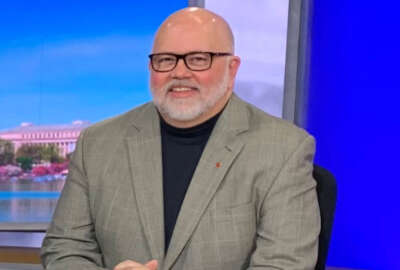NAPA report details path forward for OPM, but advocates worry it’ll be easily forgotten
The National Academy of Public Administration detailed a solid path forward for the Office of Personnel Management, former agency executives and advocates say, but...
The National Academy of Public Administration recently offered up a 114-page roadmap for the Office of Personnel Management, detailing years of leadership instability, funding obstacles and conflicting attitudes on the agency’s mission and role.
Past OPM directors and executives, as well as federal employee groups, are pleased NAPA focused on empowering the agency as the federal government’s human capital leader and laid out a path to achieve that broad goal.
But getting there is an incredibly complex feat, and it’ll take time, funding and attention to untangle the actions of several administrations that put OPM on its current footing.
Those ingredients are all in short supply today, and those with a long memory of past civil service changes worry the academy’s recommendations will sit on a shelf and collect dust — as many past reform efforts have.
“It’s déjà vu all over all again. It’s not just déjà vu all over again once, twice or three times — we have been down this path innumerable times,” said Ron Sanders, a former Federal Salary Council chairman, OPM executive and intelligence community chief human capital officer. “One has to wonder will this make any difference? That’s the question I have.”
Sanders now leads the Florida Center for Cybersecurity at the University of South Florida.
The report stemmed from the Trump administration’s proposal to merge part of OPM with the General Services Administration and the Office of Management and Budget, but NAPA’s focus was much broader.
It offered up 23 recommendations for Congress and the new administration. They range from clarifying OPM’s mission in statute and eliminating the agency’s fee-for-service model to setting up a new IT working capital fund.
“OPM is going to need partners to move forward,” said Janice Lachance, a former OPM director during the Clinton administration. “First of all, any kind of recommendation such as improving technology or improving the way you give advice to agencies and not expecting reimbursement, that’s going to cost money. You need friends within the administration that you’re operating in, but you also need very, very strong partners on Capitol Hill who are willing to advocate and speak up for OPM.”
The National Active and Retired Federal Employees (NARFE) Association is reviewing the NAPA report and determining which recommendations the administration could accomplish on its own and which ones need help from Congress.
“There are a number of recommendations that would require the support of Congress through funding, a bit less that require revision of current laws, and even several that OPM can do on its own right now,” said John Hatton, NARFE’s legislative and political affairs director. “But I worry that the charge of a big report like this is too much to take on at once, and after a short review, the report is filed away and forgotten.”
OPM’s funding challenges top the priority list
Hatton and others said they hoped OPM and the Biden administration focused first on building congressional support for additional funding.
Moving the National Background Investigations Bureau and the governmentwide security clearance, as OPM quietly warned years ago, created a significant funding shortfall for the agency in recent years.
For 2021, OPM covered the funding shortfall through a buyback services agreement with the Defense Department, a bump in appropriations and a series of operational cost cutting measures, according to the NAPA report.
OPM mostly relies on appropriations and fees, which it collects by providing certain HR services and training to other agencies. And while the Trump administration did secure more appropriated funding for OPM during the last two years, the agency needs sustained resources to modernize and keep operations afloat, NAPA said.
Additional funding is especially critical if, as the academy suggested, OPM wants to make real progress on longstanding IT modernization efforts and offer more HR services to other agencies at no cost.
Lachance, the Clinton-era OPM director, sees the budget as a good starting point for the Biden administration and the new director. The president nominated Kiran Ahuja, a former chief of staff for the agency, for the role.
“The new director has a tremendous opportunity to go in there, do a very effective assessment of the situation and make a reasonable request that covers all of the things that need to be done — and that we want to do,” said Lachance, who currently serves as an executive vice president for the American Geophysical Union. “The NAPA report is very aspirational. What is it going to take to get OPM from where it is today to this desired state that’s articulated in the NAPA report over how many years?”
The new director, Lachance added, will need to make the case why an empowered OPM will help resolve the federal government’s talent problems.
“There’s no doubt there are needs across the government when it comes to staffing and bringing expertise into help with these very serious issues that we’re contending with today like the pandemic, the economic fallout and climate change,” she said. “We have all of these priorities. Is the federal workforce prepared and does it have the people on board to starting working on those issues?”
Does Congress have the time and attention span to focus on OPM?
Some are more optimistic than others that OPM has willing partners ready to devote time and attention to the agency’s funding challenges, not to mention the statutory changes that, for example, might reaffirm the agency’s mission or give it more authority over all federal personnel systems.
Several former OPM executives said Congress lacks the bandwidth and drive to focus on civil service issues, especially when headlines on the pandemic, economy and border drive the agenda.
Dan Blair, a former OPM deputy director, said the current congressional committee structure isn’t designed to take on a big project like the one NAPA mapped out in its recommendations. When Congress passed the Civil Service Reform Act back in 1978, it had a dedicated panel — the House Post Office and Civil Service Committee — ready to conduct hearings and mark up legislation to send to the House floor.
Today, the NAPA report naturally falls to the House Oversight and Reform Government Operations Subcommittee, which has broad jurisdiction and a full plate of oversight activities.
Many former OPM executives pointed to past attempts in Congress at civil service change, like the Homeland Security Act of 2002, which they argue was never fully realized, or the National Security Personnel System — repealed after a few years — that were especially long and grueling initiatives on the Hill.
“That fatigue has morphed into a malaise,” said Blair, who also worked for the former Post Office and Civil Service Committee. “How do you address this malaise? How do you reinvigorate Congress and the administration to say we think this is extremely important, understanding that such an undertaking requires a significant commitment of staff and members’ time, resources and energy to address the reforms recommended in the report?”
OPM itself rarely appears before Congress in a public forum, NAPA said. The agency testified once before Congress in recent years on the former administration’s proposed merger with GSA.
“We see the most action from Congress when we’re in a crisis,” said Jessica Klement, NARFE’s staff vice president for policy and programs. “Unless we can get the point across that federal human capital is in crisis, which GAO has been saying for the last two decades, it’s never going to be addressed. Everyone agrees this is a problem, but no one seems to agree it’s a problem enough to fix it.”
Culture change needed inside and out of OPM
Even if it does manage to collect enough support, attention and focus from partners in the administration and Congress, former agency executives say the new director will need to make a concerted effort to transform OPM into an innovative, data-driven, strategic leader on human capital issues as NAPA suggested.
For Sanders, it’ll take more than new legislation and extra funding to meet those goals. OPM needs to demonstrate leadership, and the departments need to build or reestablish trust with the federal government’s human capital agency.
Sanders said building that trust will become especially critical if Congress changes the law so that OPM oversees all federal personnel systems, not just Title 5.
“As a person that oversaw a major subset of that, the personnel systems that cover the intelligence community, I would be fighting that tooth and nail,” he said. “OPM has to earn that trust. Right now they’re met with suspicion by agencies. The culture needs to change. If you change the culture then agencies are going to be more willing to look to OPM for leadership, but you can’t put the cart before the horse and try to mandate that leadership by law.”
Mark Robbins, a former agency general counsel, said OPM has shown organizational flexibility on multiple occasions, once when Congress tasked it with providing security clearances back in the mid-2000s and again today as the Pentagon has taken the business back. The agency has gone through other transitions before, including its initial transformation from the Civil Service Commission to OPM back in 1979.
“OPM is quite capable of shifting on a dime when it comes to culture change,” said Robbins, who also served on the Merit Systems Protection Board for seven years. “It needs the money to do that, and I just don’t think they’ve got it.”
OPM will struggle to transform, however, if the agency is hamstrung by OMB, Robbins and others said.
The Civil Service Reform Act set the OPM director as the president’s top adviser on federal human capital, but the position’s status has become “diluted over the years,” with the creation of the deputy director for management position within OMB.
OPM and OMB officials in the Biden administration have said on multiple occasions they’re working together, though neither agency has top leadership confirmed yet.
Three acting OPM directors also served as deputy director for management during the Trump and Obama administrations. Those dual-hatted arrangements hindered OPM and its independence, and over time, the agency director became more of a subordinate to the OMB deputy director for management, NAPA said.
“A dual monarchy didn’t work for Austria and Hungary, and here it was dumb and short-cited,” Robbins said.
Copyright © 2025 Federal News Network. All rights reserved. This website is not intended for users located within the European Economic Area.
Nicole Ogrysko is a reporter for Federal News Network focusing on the federal workforce and federal pay and benefits.
Follow @nogryskoWFED





